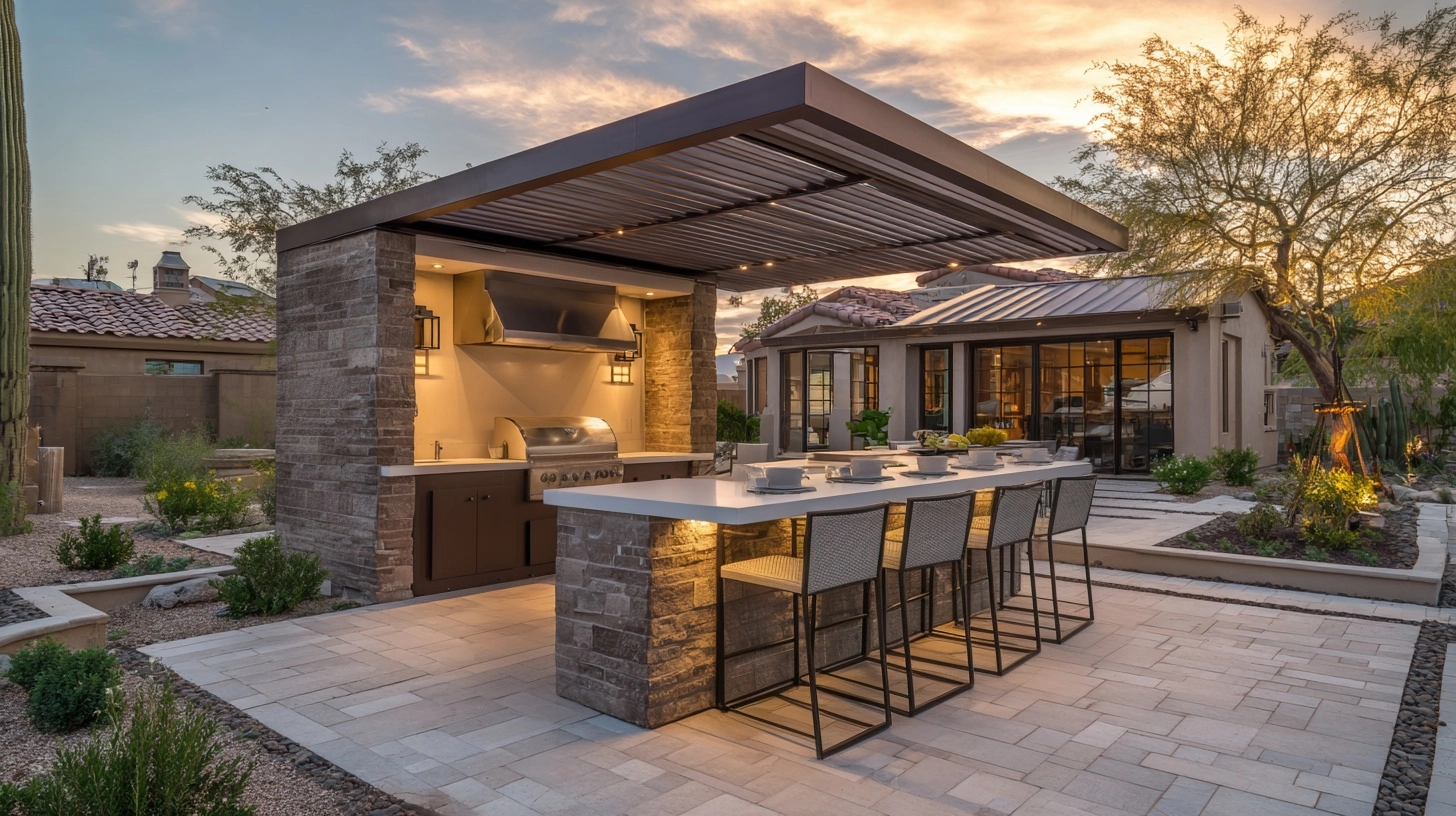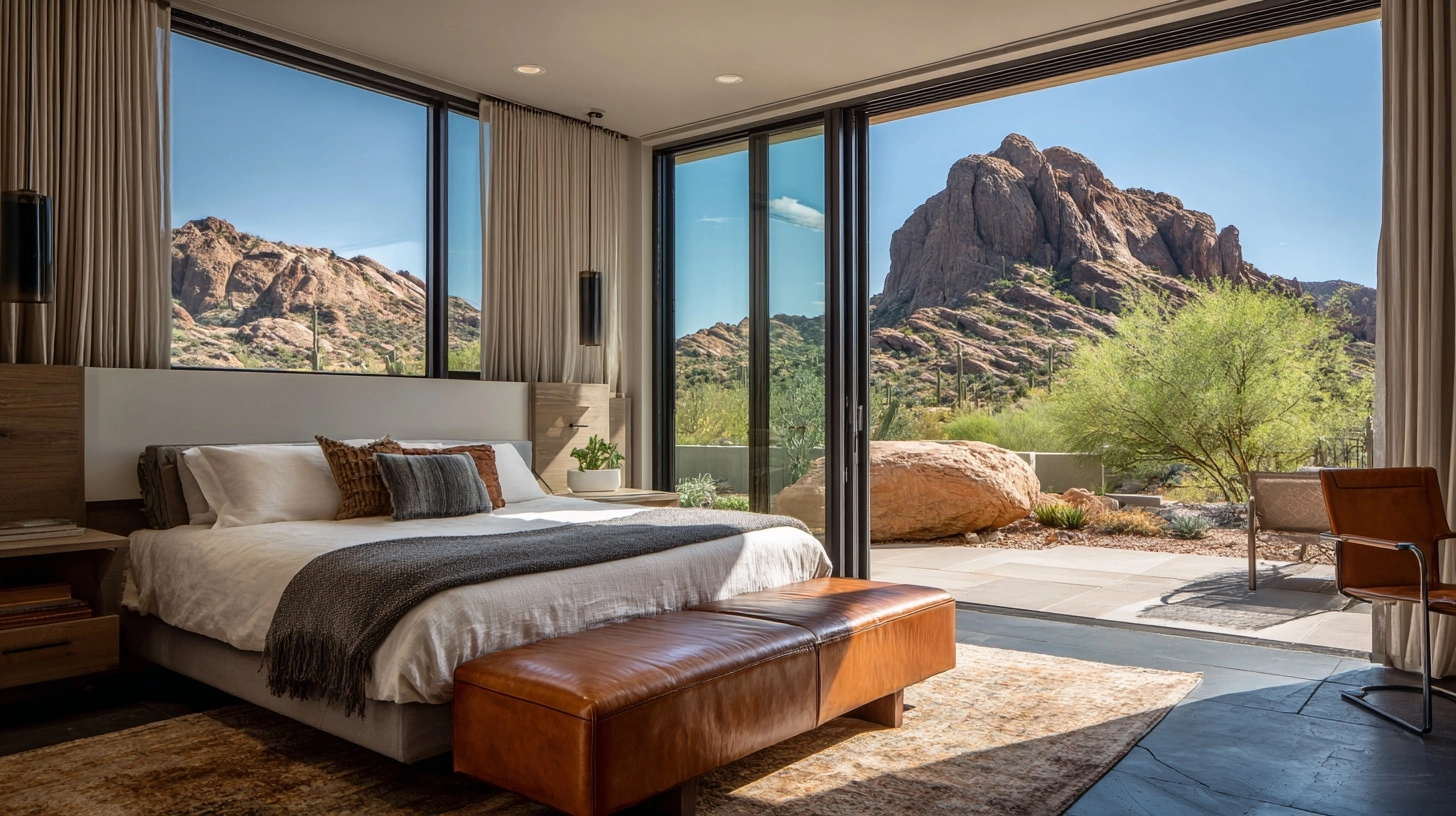
Outdoor Kitchens: Designs That Work in Phoenix Winters

Arizona Appraisals: Design Choices That Add Value Now

Entryways are the threshold between your sanctuary and the ever-changing world outside. In regions touched by powerful monsoon rains—or even the relentless sweep of desert dust—these transitional spaces must do more than look beautiful. They require a blend of innovation, thoughtful materials, and striking aesthetics to prevent water intrusion, capture dust, and still make an unforgettable first impression. Drawing from a deep well of experience with custom home remodels and commercial environments both in the heart of Chicago and the dynamic landscapes of the Southwest, this article unpacks how to create a monsoon-smart entryway that stands up to nature without compromising your curated sense of style.
Monsoon season is not just about heavy rainfall—it’s a symphony of shifting winds, abrasive dust, and the risk of water intrusion. For homes in monsoon-prone regions, especially those flanked by desert terrain or urban stretches, the entryway becomes a frontline defense. The challenges aren’t merely functional; they’re also aesthetic. Traditional storm doors and rubber mats may stop some debris but often corrode the visual harmony you’ve worked so hard to cultivate.
Chicago’s urban grit and the arid plains of Scottsdale offer two sides of the same coin: dust and moisture invade indiscriminately. This calls for an entryway solution that integrates climate-specific functions with a luxury aesthetic. High-end design today doesn’t stop at surfaces; it offers holistic solutions—recessed drainage, sleek weatherstripping, and advanced floor systems—that protect without ever signaling their utilitarian origins to your guests.
Monsoon-smart entryways begin with deeply understanding local climate intricacies, from the angle of rain on a windy day to the magnetic draw of dust into air-conditioned interiors. It’s not enough to plug gaps and place mats; truly effective solutions anticipate, embrace, and deflect these elements while making a statement.
At the heart of any monsoon-smart entryway lies a considered palette of materials. Not all surfaces are created equal, especially where weather extremes rule. Flooring is the anchor: opt for slip-resistant porcelain tile, textured stone, or sealed concrete. These materials stand up to moisture, are simple to clean, and radiate elegance—especially when paired with meticulously laid patterns or insets that echo the home’s overall design.
Wall surfaces and architectural details shouldn’t be overlooked. Materials like composite wood, high-density fiber cement, or even strategically sealed natural stone introduce warmth and textural interest while resisting water damage and dust accumulation. For Chicago-inspired urban projects, metal accents—think powder-coated steel or zinc—add a nod to industrial chic while functioning as weatherproof armor.
Doors are a focal point both in form and function. Invest in doors with reinforced cores, advanced weatherstripping, and modern thresholds that keep out wind-driven rain—preferably with flush or low-profile sills for seamless transition. Glass inserts can brighten the space but must feature high-quality seals and, ideally, hydrophobic coatings that repel water droplets. Rounded out with matte-finish, rust-resistant hardware, these material upgrades set a new bar for style-meets-performance.
An effective entryway doesn’t just keep elements out—it manages what comes in. Subtle architectural interventions do the heavy lifting here. Overhangs, porticos, or even a thoughtfully extended soffit provide the first line of defense against rainfall. Where space allows, these roof extensions can be paired with side walls or screens, channeling windblown rain and dust away from the main door.
Inside, the best monsoon-smart designs create a secondary containment area: a mud zone with slightly recessed flooring, built-in benches, and accessible storage. This layout encourages family and guests to pause, remove shoes, and stow wet or dirty outerwear, preventing the spread of grime to the rest of the home. Built-in cabinetry with ventilated sections keeps airflow moving over damp items, speeding dry times and minimizing musty odors.
Drainage and ventilation are just as critical. Trench drains at thresholds, slightly sloped exterior slabs, and inconspicuous weep holes in brick or stonework ensure that water is quickly ushered away from the entry. Inside, installing concealed air returns or small, quiet exhaust fans beneath cabinetry further combats moisture buildup—key in climates where humidity spikes during storms. Every detail is orchestrated to enhance usability and elevate daily routines, marrying practical foresight with architectural grace.
A successful entryway isn’t solely utilitarian; it must welcome and impress. Lighting is pivotal, especially during gray, rain-lashed afternoons or evening downpours. Layered outdoor fixtures—combining recessed can lights, sconces, and shielded landscape lighting—guide visitors safely while highlighting architectural strengths and minimizing dark, muddy corners where debris can accumulate.
Rugs and mats are essential, but style does not have to be sacrificed. Select performance textiles in rich textures and sophisticated patterns—think handwoven polypropylene or solution-dyed acrylics that mimic natural fibers but excel in water resistance and durability. These pieces catch debris, dry quickly, and are easy to shake out or clean after a storm.
Plants and organic décor infuse warmth while doubling as dust traps. Cluster potted greenery in weighted planters just inside and outside the entry, favoring species with waxy, broad leaves that can be easily wiped. From sculptural vases to framed art crafted from reclaimed materials, personal touches reinforce that this space is as much a part of your home’s identity as any living room or kitchen.
Transitions from the entry to main interior spaces should be seamless, both physically and visually. Use similar finishes or echoing color palettes for continuity, and ensure thresholds—whether level or slightly raised for drainage—are bordered by soft, tactile surfaces to gently signal a new zone without interrupting flow.
No two entryways should be the same, just as no two families or businesses have identical needs. The secret to monsoon-smart success lies in customization—and working with a design team that bridges the gap between luxury aesthetics and high-performance construction. Begin with a thorough site assessment, observing how wind, rain, and foot traffic interact with your property during storm cycles and in everyday use.
The most satisfying results are born from dialogue, blending lifestyle requirements with creative ingenuity. For homes with young children, consider integrated cubbies or splash-proof seating. For businesses, specify commercial-grade flooring and reinforced pivots on doors, supporting higher usage while maintaining brand consistency from the entry onward. Smart-home technology—door sensors, automated shades, even voice-controlled vestibule lighting—can be layered in for extra protection and convenience.
Ultimately, crafting entry spaces that withstand the monsoon season—and all its challenges—without sacrificing beauty is an art form. With the right attention to detail, a monsoon-smart entryway won’t just shield you from dust and water. It’ll set the tone for your entire property, making a confident statement about your tastes, your priorities, and your dedication to comfort and style.
Whether you’re redesigning from scratch, updating a legacy space, or seeking professional guidance for a new build, approaching your entryway as both a defensive and design-forward feature ensures that the first impression is always your best—rain or shine.
Disclaimer: The content provided in this article is for informational purposes only and is not intended as financial, tax, or investment advice. JL Coates is not a financial advisor, tax consultant, or investment specialist. We recommend consulting with a professional financial advisor, tax specialist, or investment advisor to discuss your specific circumstances before making any financial, tax, or investment decisions based on this information. JL Coates assumes no responsibility for any actions taken based on the information provided in this article.



